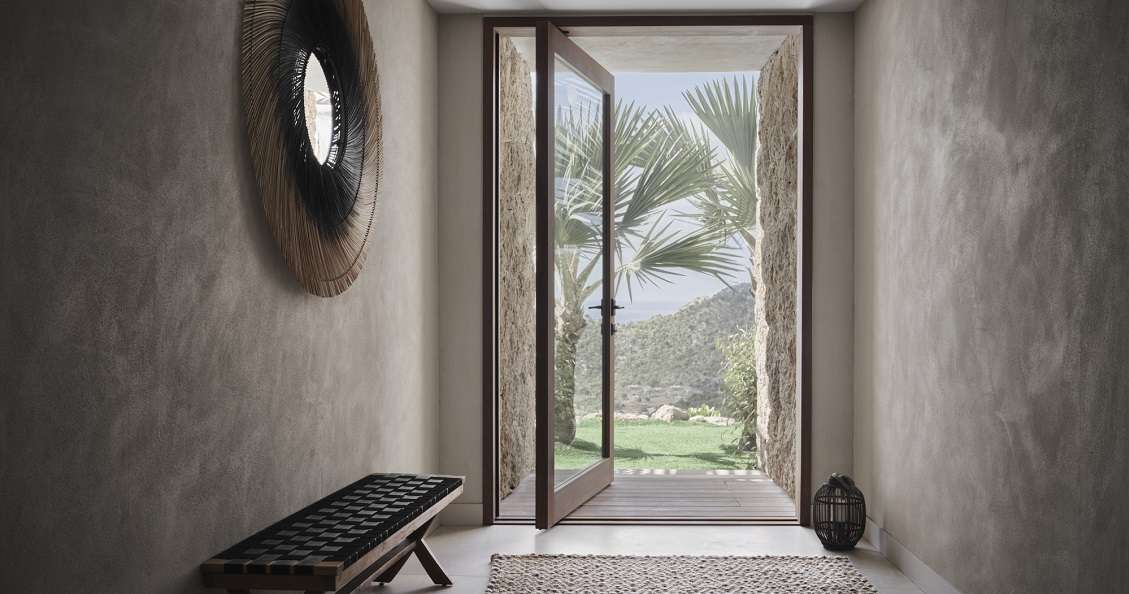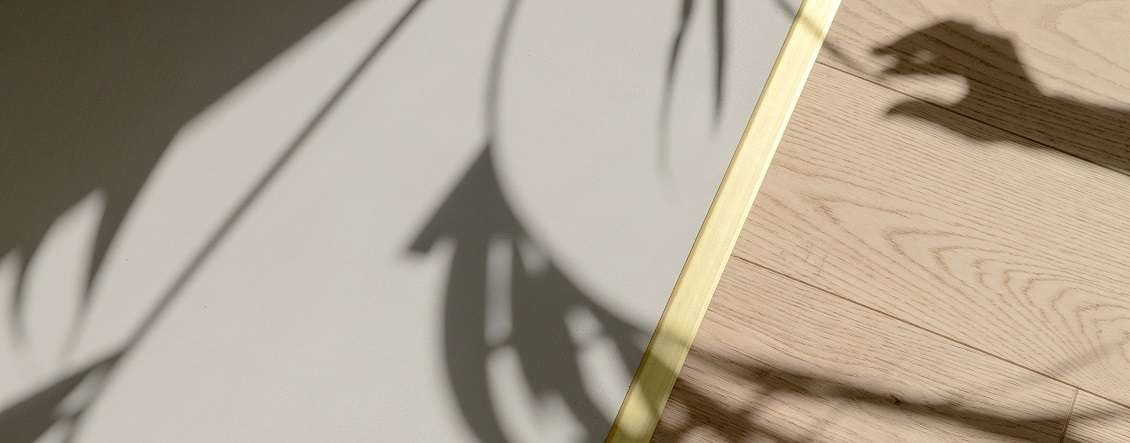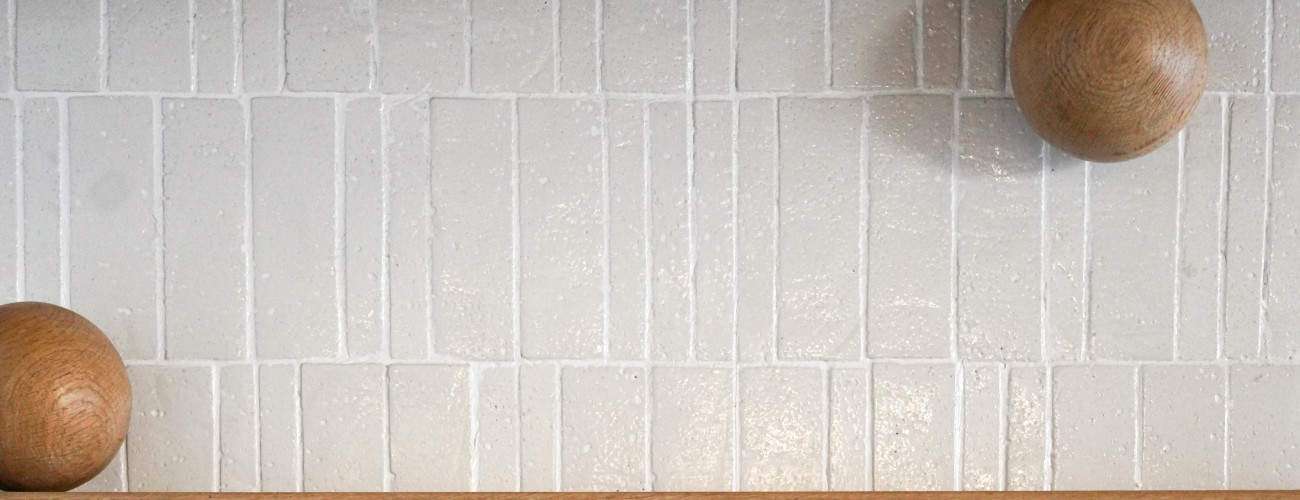Natural, breathable lime, available in 56 shades from the IRIS color chart
Marius Aurenti lime is a mineral material whose timeless nobility lies in its ability to breathe through walls and the depth of its mineral pigments.
It is available as Fine Lime for fine coatings, brushed lime, whitewash and as a coating with a thousand marble asperities, Marmorino, for interior and exterior walls.
It is applied over an interior and exterior lime primer suitable for preparing substrates before applying Fine Lime or Marmorino.
On older buildings or in HQE construction, lime coating lets walls breathe thanks to gas exchange. This natural ventilation regulates humidity and improves air quality.
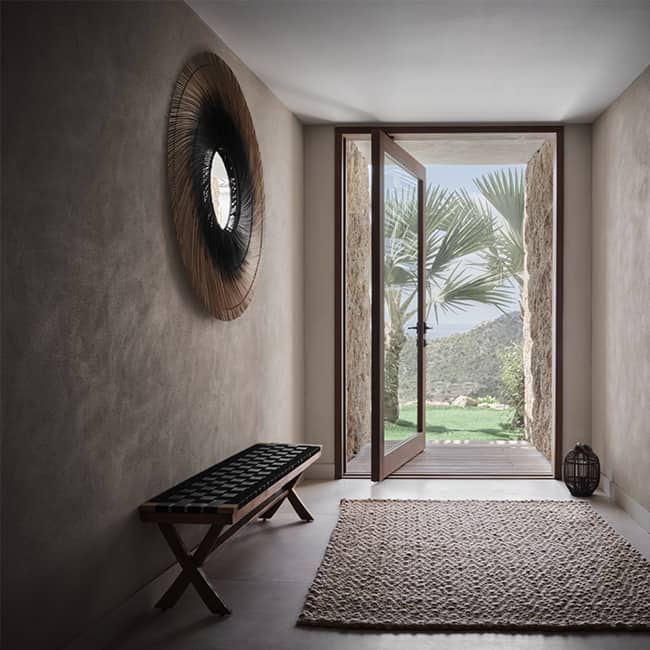
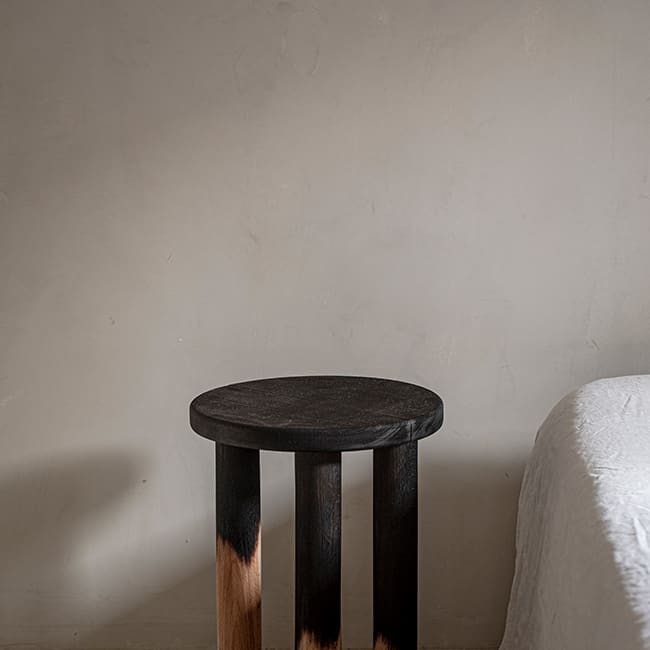
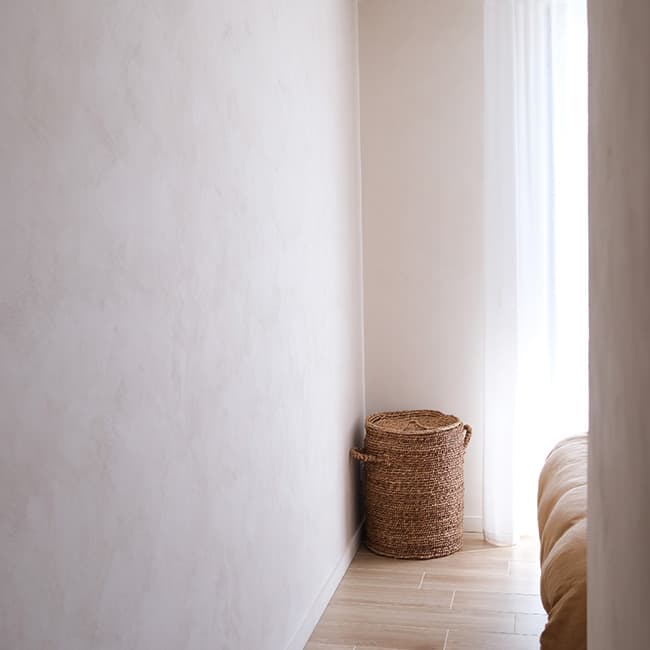
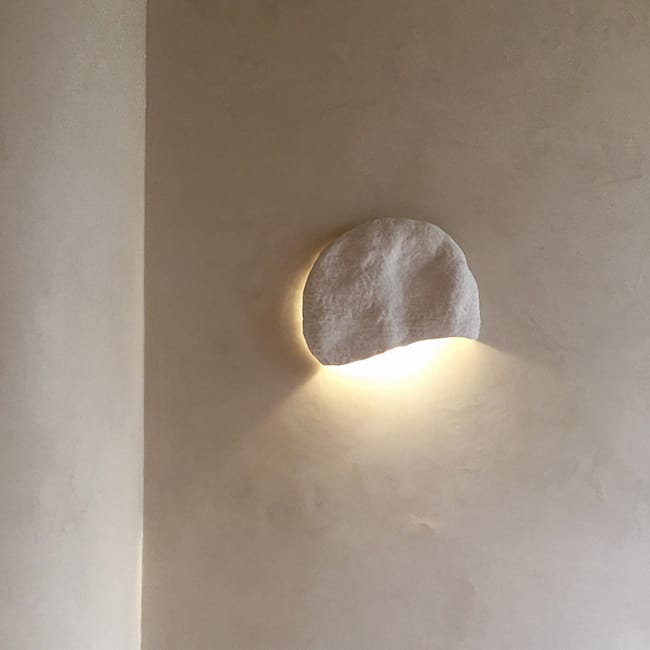
Processing FINE lime
- Can be smoothed or stuccoed with a metal trowel
- Can be strung with a spalter
- Can be applied as a whitewash
SUBSTRATES
Fine Lime and Marmorino primer can be applied to these substrates:
- New and old hydraulic binder-based wall coatings
- Concrete walls
- Plasterboard walls
- Old organic or mineral paints and coatings
- Substrates must be clean, sound and dry (free of oil and grease stains).
Fine Lime and Marmorino are then applied over this primer.
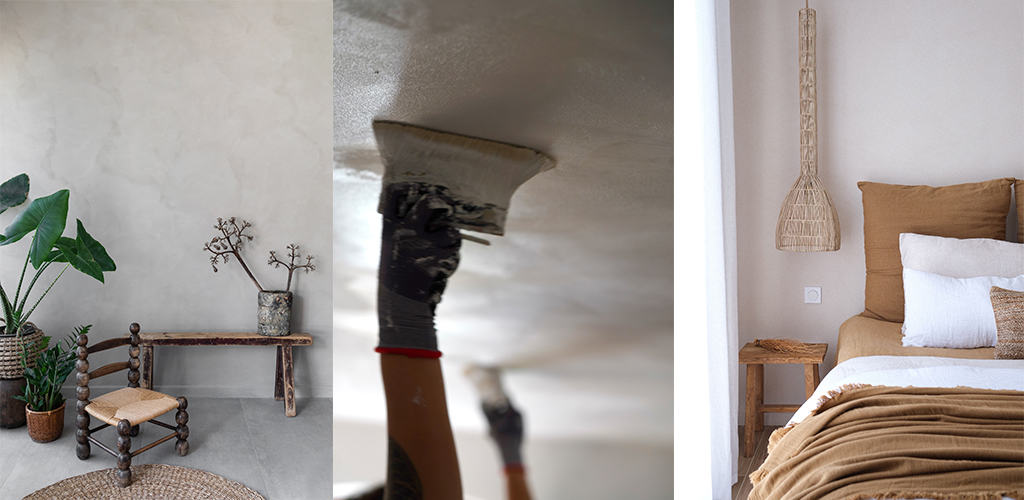
Wax finish
Finally, they can be finished with lime wall wax, a mixture of synthetic resins and emulsion wax.
Full details in the technical data sheets.
Order your samples and color charts from the Matériauthèque.
Lime color chart 56 colors – Marius Aurenti
Technical data sheets (PDF format)
Fine Lime data sheet
Technical data Marmorino lime
Lime wall primer data sheet
Technical sheet Lime wax
Technical data sheets (web format)
Fine Lime data sheet
Fine Lime, in paste, tinted in the mass for making deep mat renders, whitewashes and corded limes.
Presentation
Lime is a mineral material whose eternal nobility lies in its ability to let walls breathe and to bring depth of color thanks to mineral pigments.
As a fine-paste lime, it can be used to produce fine coatings, brushed lime or whitewash.
Available in 56 shades from the Marius Aurenti IRIS color chart, colors and materials decorate contemporary or classic interiors.
Properties
Lime coating lets walls breathe. This natural ventilation regulates humidity and improves air quality for a healthy interior. Alkali-resistant.
Colors
56 shades from the Iris color chart
Composition
Lime-based plaster.
Packaging
Lime paste with neutral base: 1kg, 10 kg and 20 kg
Coloured lime paste: 1 kg
Colored lime putty: neutral-base lime putty (10kg, 20kg) + color dose
Areas of use
Paste lime is designed for interior wall and ceiling decoration (excluding areas exposed to water splashes). In damp rooms, protection with Marius Aurenti Lime Wall Wax is recommended.
Implementation
Substrate and substrate preparation
To ensure color consistency, use the same batch number for the same job.
Suitable substrates: plasterboard, concrete, old paint.
Substrates must be sound, dry, clean (free of oil or grease stains) and cohesive, in accordance with current DTU standards. (59.1 and 26.1)
Substrates must be prepared with a coat of Lime Wall Primer (see Technical Data Sheet).
If you wish to create a thicker or lightly grained coating, use Marmorino Marius Aurenti (see Technical Data Sheet).
Comply with DTU rules (26.1)
Application material
Stainless steel or plastic float or smoother (mostly light colors) for plaster or stucco.
Spalter or lime brush for whitewash.
Application conditions
| Temperature | >5°C and <30°C (ideal temperature: >15°C and <20°C) |
| Relative humidity | <70% |
Before application, check substrate for moisture content (10% maximum).
Mixture preparation
Dilution :
- No dilution required for plaster or stucco.
- Add 5 to 10% water to make a whitewash.
Coloration :
- Pour the full amount of color into 10kg or 20kg neutral-base paste lime. If necessary, use a tool or the material itself.
- Mix the paste and color dose with a mechanical mixer for the time needed to obtain a perfectly homogenous paste in color.
Plastering
Apply a first coat of lime using a float or smoothing trowel.
Allow to dry for 12 hours (at 20°C and 60% relative humidity).
Apply a second coat, taking care not to overlap applications.
Allow to dry for approx. 1 hour before applying a top coat.
Matt finish: simply allow to dry.
Stucco finishing: When the plaster begins to set, when it begins to matt, smooth the plaster with a trowel to make it glossy.
Making a whitewash
To make a whitewash, dilute the product with water and apply with a spalter or lime brush in 2 coats.
Consumption
Coating: approx. 0.5 – 1kg/m² in 2 coats.
Slurry: approx. 0.3 – 0.7 kg/m² in 2 coats
Protection
Paste lime can be protected with Lime Wall Wax, or left untreated.
Drying time at 20°C and 60% relative humidity
| Between 2 coats | 12 hours |
Tool cleaning
Equipment should be cleaned with hot water after use.
Technical specifications and performance
| Water vapour diffusion | 370 g/m² in 24h |
| Vapour diffusion resistance factor | µ = 10 |
| Equivalent air layer | Sd = µ * s = 0.06m (with s = 0.6 * 10-3m) |
| Water absorption coefficient | w = 0.2 kg/ (m² * h ½)
Sd * I = 0.012 kg/ (m² * h ½) |
Product appearance
White paste + pasty color dose
Density (at 20°C)
1,5
Storage and safety
Keep product closed for best preservation. If necessary, place a plastic film over the product to limit air contact. 1 year in original, unopened packaging, out of direct sunlight and frost, at temperatures between +5° and 35°C.
For further safety information, please consult the Safety Data Sheet.
Technical data Marmorino lime
- Air lime finishing coat
- Fine marble grain
- Interior and exterior
Presentation
Lime is a mineral material whose eternal nobility lies in its ability to let walls breathe and to bring depth of color thanks to mineral pigments.
Marmorino enriched with marble grains provides timeless decoration for interior and exterior walls.
The slow maturation of our lime gives this finishing plaster superior smoothness and physical and aesthetic qualities.
Lime is a mineral material whose eternal nobility lies in its ability to let walls breathe and to bring depth of color thanks to mineral pigments.
As a fine-paste lime, it can be used to produce fine coatings, brushed lime or whitewash.
Available in 56 shades from the Marius Aurenti IRIS color chart, colors and materials decorate contemporary or classic interiors.
Properties
Natural, breathable, highly resistant to alkalis and mildew.
Colors
56 shades from the Iris color chart
Composition
Mixture of lime and marble powders.
Packaging
Marmorino neutral base: 1kg, and 18 kg
Marmorino color: Marmorino neutral base (18kg) + color dose
Areas of use
Interior and exterior decorative wall cladding.
Implementation
Substrate and substrate preparation
Substrates must be sound, dry, clean (free of oil or grease stains) and cohesive, in compliance with DTU 59.1 and 26.1.
Apply one coat of Wall Primer for Lime (see Technical Data Sheet).
Comply with DTU rules (26.1)
Application material
25cm float and smoother
Cleaning tools with water
Application conditions
| Temperature | >5°C and <30°C (ideal temperature: >15°C and <20°C) |
| Relative humidity | <70% |
Prior to application, check substrate humidity (10% maximum).
When applying during periods of high temperatures, it is advisable to wet the substrate with water.
For outdoor use, avoid application in direct sunlight and/or strong winds.
Avoid application during the coldest periods of the year.
After application, protect coated surfaces from rain for at least 72 hours at 20°C during the carbonation (drying) period, to avoid surface whitening.
Mixture preparation
To ensure color consistency, use the same batch number for the same job.
Dilution: 30-40% with water, depending on substrate.
For 18kg of Marmorino, prepare 7.2kg of water.
For 9 kg of Marmorino, prepare 3.6 kg of water.
- Add the entire color dose to the water and mix thoroughly by mechanical means.
- Add the colored water to the powder, with mechanical stirring, to obtain a homogeneous consistency and color.
- Stop mixing until a homogeneous paste is obtained.
- Apply a first coat with a smoothing tool, taking care not to overlap applications.
- Allow to dry for 16 hours before applying a second coat.
- Before the surface of the second coat dries, shoe well to obtain a perfectly smooth surface.
Consumption
Approx. 2 kg/m² in 2 coats
Protection
Marmorino can be protected with Lime Wall Wax, or left untreated.
Drying time at 20°C and 60% relative humidity
| Between 2 coats | 16 hours |
| Fully dry | 10 days |
Tool cleaning
Equipment should be cleaned with hot water after use.
Technical specifications and performance
| Performance | Classification according to NF EN 998-1 | |
| Thermal conductivity (EN 1475) | 0.36 W/mK | 0.36 W/mK |
| Flexural strength (NF EN 1015-11) | 1.8 N/mm² bending strength | / |
| Compressive strength (NF EN 1015-11) | 3.7 N/mm² compressive strength | CS II |
| Adhesion (NF EN 1015-12) | 2.0 N/mm² adhesion | ≥ 2.0 N/mm² |
| Coefficient of water absorption by capillary action (NF EN 1015-18) | 0.58 kg / m² * min½ | / |
| Water vapour permeability (NF EN 1015-19) | 1.8 * 10-9 kg/m² * s * Pa
1.5 *10-11 kg /m * s * Pa |
/ |
| Water vapour diffusion resistance coefficient calculated according to NF EN 998-1 table 2 note b, (NF EN 1015-19) | µ = 11 | µ ≤ 11 |
Product appearance
White powder. + paste color dose
Density (at 20°C)
1,55
Storage and safety
1 year in original, unopened packaging, out of direct sunlight and frost, at temperatures between +5° and 35°C.
For further safety information, please consult the Safety Data Sheet.
Lime wall primer data sheet
Presentation
Areas of use
Interior and exterior lime primer suitable for preparing substrates prior to applying Lime Paste or Marmorino.
Composition
Lime-based primer.
Properties
Improves lime adhesion on plaster, lime and concrete substrates.
Packaging
1L, 5L, 14L
Substrate and substrate preparation
Applicable to :
- New and old hydraulic binder-based wall coatings
- Concrete walls
- Plasterboard walls
- Old organic or mineral paints and coatings
Substrates must be clean, sound and dry (free from oil or grease stains).
Application material
12 mm roller, brush or spray.
Application conditions
Temperature
> 5°C and < 30°C (ideal temperature: >15°C and <20°C)
Relative humidity
< 50%
Substrate humidity
4% maximum
Outdoors, avoid application in direct sunlight and/or strong winds.
Implementation
Mixing ratio
Dilution: ratio 2:1 / primer: water
For 1 L of primer, add 0.5 L of water
For 5L of primer, add 2.5L of water
For 14L of primer, add 7L of water
Stir well mechanically before application to obtain a homogeneous fluid mixture.
Apply one coat with a roller or brush. Allow to dry before applying lime.
Consumption
Between 100 and 150 mL/m².
Drying time at 20°C and 60% relative humidity
Dry to the touch
4 hours
Tool cleaning
Equipment should be cleaned with water after use.
Technical specifications and performance
Product appearance
White paste
Density (at 20°c)
1,4
Storage and safety
1 year in original packaging, out of direct sunlight and frost, at temperatures between +5° and 30°C.
For further safety information, please consult the Safety Data Sheet.
Technical sheet Lime wax
See the lime wax data sheet on the Concrete and Lime Waxes page.
Q&A all about lime
What is lime whitewash?
Lime whitewash is a decorative wall finish based on lime and water with a few additives, used for coloring walls and creating graphic effects.
How to make a lime whitewash?
To produce the material needed for a lime whitewash, simply mix these three ingredients:
- air lime powder or paste
- water
- color pigment
How to apply lime whitewash?
Before applying lime whitewash, it’s important to check the quality of the substrate. There’s no question of painting over a friable, porous, water-repellent or deteriorating substrate. The substrate must be smooth and even.
If the substrate is plaster, plasterboard or drywall, you must first apply a coat of primer, which as its name suggests, will enable the whitewash to block the base and cling to the surface. Then allow to dry and dust off.
Next, dampen the substrate and apply layer after layer of lime whitewash with a wide brush, sponge or spalter, alternating horizontal and vertical coats.
Aesthetic, tone-on-tone cameo, cloudy or marbled effects can be achieved by applying a lighter coat after a darker one, or vice versa.
Which lime to paint a wall with?
To whitewash a wall, use air or hydraulic lime, in powder or paste form.
Air lime, based on calcium oxide and hydroxide, differs from hydraulic lime, based on aluminates, silicates and calcium hydroxide.
Air lime dries slowly on contact with air and is subject to a carbonation process, whereas hydraulic lime sets rapidly.
What’s the difference between whitewash, simple whitewash and material whitewash?
Lime milk
Lime milk is made up of 1 part lime to 10 parts water. A certain percentage of pigment is added to the volume of lime, depending on the desired color. So, for 100 grams of lime and 10% pigment, we’d add 10 grams of pigment. We also add a few drops of black soap, which acts as a wetting agent. It can be further diluted to obtain a patina.
Simple whitewash
A simple whitewash is made up of 1 part lime to 2 parts water, with the addition of a percentage of pigments and a touch of black soap, and around 2% casein or vinyl binder by weight of lime.
Material whitewash
Raw whitewash is composed of a volume of lime, plus 20% of its weight in blanc de Meudon, 10% talc, and around 20% pigment, depending on the desired color. 10% of the lime weight can be added as a fixative, casein or vinyl binder. This type of whitewash is mainly used outdoors.
What is lime coating?
Lime coating is a mixture of lime powder or paste and sand.
If hydraulic lime is used, the rendering will dry faster than with air lime.
How to make a lime coating?
Mix approximately 1 part lime to 3 to 5 parts sand.
It is then applied in 3 layers:
- The first coat is applied directly to the substrate, covering any irregularities (brick, stone, etc.).
- The second coat, also known as “roughing”, is applied over the first after a week’s drying, and results in a flat surface.
- The third, much thinner coat is applied 3 weeks after the second. Pigments can be added (10 to 20% of the lime weight) to modify the color of the rendering, and a little black soap to help distribute the pigment.
What are the advantages of a lime wall?
A lime wall has many advantages:
- it looks great and can be tinted to your taste – Marius Aurenti offers it in 56 shades
- it lets the interior space “breathe” thanks to its micropores
- it acts as a humidity regulator
- it acts as a sanitizing agent, preventing micro-organisms from growing and eating away at the wall
- it’s strong and durable
- a lime wall is a good thermal and acoustic insulator
- on the outside, a lime coating protects the wall from the elements
- used since antiquity, it is a sure bet in the construction industry, steeped in tradition.
What is the Marmorino?
Marmorino is a plaster just a few millimeters thick, a mixture of lime, marble powder, pigments and water. It has a glossy, marbled and luxurious appearance.
It’s also known as stucco marmorino, literally marble stucco.
Its origins date back to antiquity – it was already found in Pompeii – but above all to the golden age of the Republic of Venice in the 17th century, when it was used to clad the facades of majestic palaces.
How do I apply Marmorino to a wall?
Marmorino is applied to a wall layer by layer, after thoroughly wetting the substrate, which must be homogeneous.
The craftsman uses a stainless steel smoother or, for a rubbed effect, a polystyrene or sponge rubbing pad.
Marmorino can be used as a wall covering both indoors and out.


